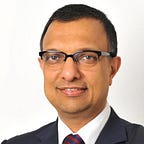Thailand’s universal healthcare can be a model for developing countries
An op-ed by Stefan Nachuk- Deputy Director, Global Development, and Nachiket Mor- Country Director, India at Bill & Melinda Gates Foundation
While much has been written about the universal healthcare models of high-income countries such as United Kingdom and Germany, it is generally not well known that Thailand achieved Universal Healthcare (UHC) in 2002, when its per capita income and health expenditures, and tax base, were comparable to what India has today. Post UHC while total health spending has stayed stable in Thailand at around 4 percent of GDP, the proportion paid out-of-pocket has dropped sharply to 12 percent, while the developing country norm is in the range of 40–60 percent, with large numbers of people returning to poverty for this reason in many countries, including in India. Health outcomes have also improved dramatically. The proportion of children dying in the first five years of life, for example, has fallen to less than 1.2 percent. And, on the chronic disease front, using its primary care platform and well-developed referral system, it has been able to increase access to standard care to about 50 percent of total depressive disorders and decrease its suicide incidence by close to 25 percent. Thailand’s success at making all this happen, even as the low middle-income country it was at that time, was considered nothing short of miraculous, and holds a number of relevant lessons for both developed and developing countries such as India, that are seeking to control costs and associated impoverishment while continuing to improve health outcomes.
One of the key lessons from their experience is the importance of being well-prepared for emerging opportunities. For Thailand this came with the election of a new government which had promised that it would improve the life of the average Thai citizen. By that time, within government and in domestic universities such as Mahidol, Naraseun, and Chulalongkorn, deep technical capabilities in health systems design had already been built, over a period of many years. This gave policy makers access to well-developed approaches and analytics, and allowed the government to move with confidence, and quickly, within weeks of its election, effect dramatic changes in Thai healthcare systems. With these changes Thailand could rapidly expand coverage to those who did not yet have access, while also saving money by shutting down or consolidating selected hospitals that had large government budgets but were seeing very few patients because of quality concerns.
Another powerful lesson is the importance of tight control within health systems. Because the Thais understood that they only had very limited resources at their disposal they initially excluded many high cost treatments such as renal dialysis and organ transplantation. They then went on to build a careful architecture which allowed them, through their Health Intervention and Technology Assessment Program, to clearly specify medically validated protocols and associated prices for all the available services, including diagnostics and medicines. Through their National Health Security Office, they designed a system in which primary care was given importance and patients were prevented from seeking higher levels of care without first seeing their designated primary care providers, and, only where necessary, being given a clear reference to a higher and more expensive facility. Through this office, purchasing arrangements were extended to both private and public-sector providers using payment and quality control approaches that gave priority to patient health and well-being, and avoided unnecessary treatments.
The third and perhaps the most important lesson was the value of being intensely pragmatic and politically astute. For example, they had very few physicians so they worked with nurses. Since did not even have a sufficient number of nurses they hired young women with high school diplomas and gradually ‘grew’ their health workforce by alternating intensive field experience for them with classroom training and certification. Once the reform was introduced and approaches to providing care were rationalized, the prescient decision on their part to include even the non-poor created a broad constituency in its favor which made it hard to reverse. Today, all the main political parties support the UHC scheme, as a result, while it will continue to evolve, it is highly unlikely that the basic scheme would ever be abolished in the future.
As developing countries seek to pivot towards providing universal healthcare to their citizens, the three broad lessons from Thailand, of being prepared, exercising tight control, and being pragmatic and politically astute, could prove to be very valuable ones to keep in mind. In addition, while there will be a need for careful adaptation and learning, there are several other lessons from their experience that hold a great deal of value as well.
This article was originally published in Hindsutan Times on Sep 29, 2018
